I had a conversation with a patient the other day… in the middle of the night, would you believe, during his emergency visit with us here at Central Hutt Dental. One of the many things discussed was the dreadful costs of dentistry, why it costs so much, and how do dentists price a procedure. I thought this would be an interesting topic to talk about as I get asked these questions a lot.
How Long Does It Take?
A lot goes into the price of a procedure, firstly, how much clinical time is needed. It sounds simple, however, there are only 8-9 hours available for our work in surgery and approximately 30% of this is for consultations and review. So a portion of the cost of a procedure goes towards our time.
Cost of Materials:
Again, it does sound like a simple concept, but in essence, a part of the cost of a procedure is the procurement of these goods. Some of the technology and materials we use are difficult to resource and the demand is at a higher cost. The more expensive and the number of resources we need affects the price.
At Central Hutt Dental one of the main philosophies in terms of the clinical products and services we provide is excellent world-class care. We don’t want to be just another standard dentist, we aim to be, and often are industry leaders in every aspect of clinical and service-based dentistry.
As a comparison, here is a basic “shopping list” comparing how and what we use to deliver a basic direct restoration (filling) at our practice vs many of our competitors:
| Average General Dentist | Central Hutt Dental |
| Local anaesthetic | Intraoral camera — to take pre during and post clinical photos |
| Drill and handpiece to make access | 7-8 times surgical magnifying loupes |
| Etching agent to prepare tooth structure | Topical anaesthetic to help make the injection more comfortable |
| Bonding agent for a white filling | Local anaesthetic |
| Composite/white filling resin | High-end dental burs and surgical hand-pieces |
| Light cure | Ultrasonic tools to help debridement |
| Polishing agent | Lasers for sealing deeper lesions and sealing decay |
| Decay detect die is used often to make sure we have removed all of the dental decay in the tooth | |
| Caries/decay arresting agent – we treat most cavities with an agent after drilling to help chemically kill the bacteria infecting your cavity | |
| Liner material — we use the best international brands to line many of our deeper cavities | |
| Multiple resins are used for a layered dental filling to maximise the functional strength and aesthetics | |
| Multiple-step adjusting, polishing and finishing burs and polishers |
As you can see, a lot goes into just delivering what most people would consider one of the more simple procedures.
The Kind of Surgery Needed:
Another overlooked concept is the type of surgery we are doing. Whether it is a simple superficial filling with low risk or a dental implant in the upper back jawbone requires a lot of technical skills and has a higher risk factor. In a more surgical procedure, the chances and risks are far higher, and our ability to manage for more advanced complications and tissues are put to the test. This is why consultations often cost less than surgery.
Another sub-factor is the result that we need to deliver – for example, there is a big difference in placing an implant on a back tooth vs a front area in the smile line. The smile line has far more demands to make sure we get a restoration that can meet the functional and aesthetic needs.
Market Prices:
We must also look at other clinics and specialist charges for similar services and how we compare. It would be unethical to completely undercut our competitors or be multiple times more expensive. We look at the market, and accounting research all the time to see what our fellow clinicians are charging and how we place depending on our experience and service delivery.
Basic Accounting:
The final and largest contributor is general cost. An area that is overlooked and underestimated by a lot of our patients is registration, maintenance, staff fees and taxes. The latter is by far the biggest factor, approximately 56-60% of the costs are taxes and maintenance fees. Shocker right? But dental clinics are like other businesses, we face the same taxes and substantially higher registration and licensing fees (for our clinicians and equipment facilities etc).
There you have it, a good summary of what goes into the dreadful costs of dentistry. I hope this demystifies the topic and helps you to understand why prices are the way they are. If you need dental treatment contact Central Hutt Dental today for world-class care!






